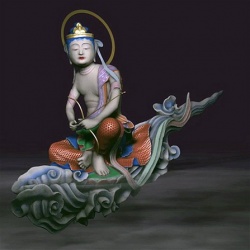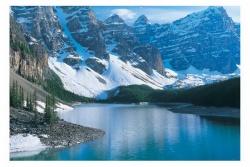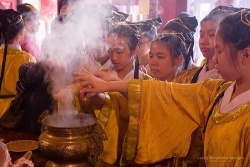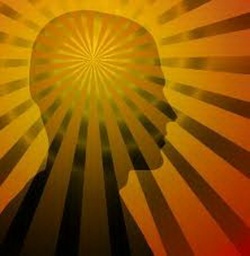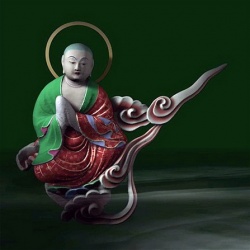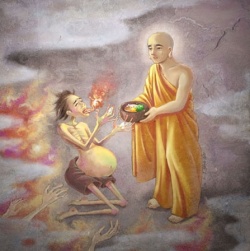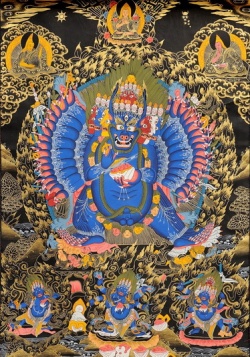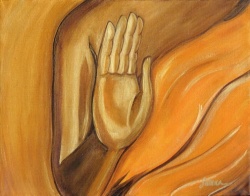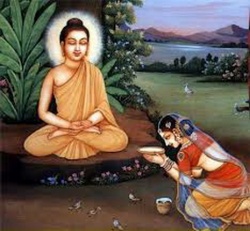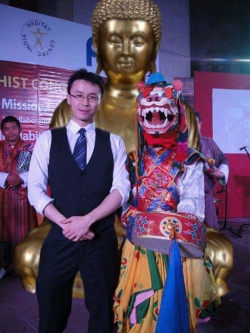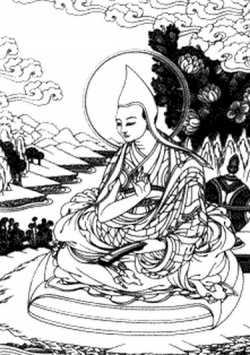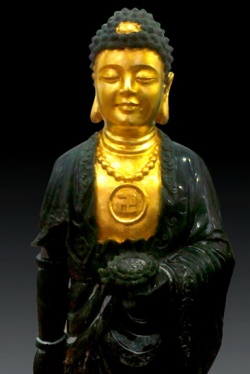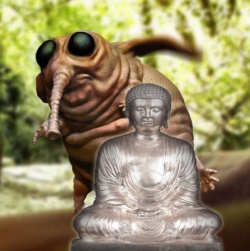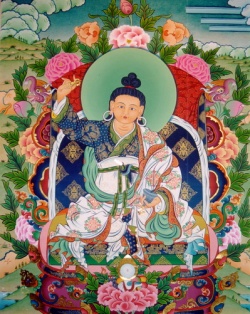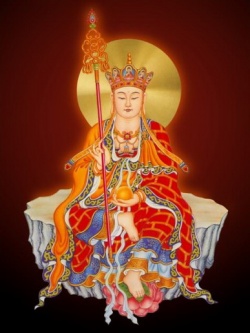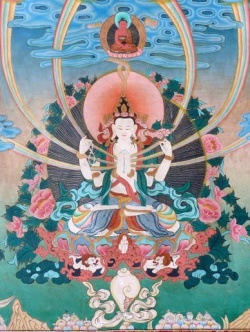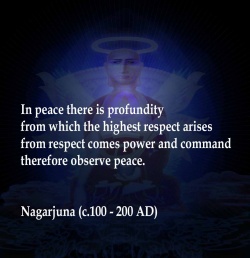The Buddhist Councils
These notes include:
the causes that led to the first three Buddhist Councils and their contribution to Buddhism
The Buddhist Councils
Introduction :
after the Parinibbana, the Buddha's mortal remains were cremated and His relics were distributed to various places where they were enshrined in stupas
how then would Buddha's followers fare now with him gone?
The Buddha had always encouraged self-reliance
he had not tried to make himself indispensable by promoting himself as a personal leader and had not appointed a successor
he also stressed that after His passing away the sangha will still have His Teachings (the Dhamma) to guide them
according to Pali tradition recorded in Canonical and non-canonical literature, 3 Buddhist Councils or Sangitis (recitals) were held to draw up the texts and the creed in their pure form
the Buddha's words remained an oral tradition for more than 4 centuries
The First Buddhist Council 1
according to Pali tradition, the First Council was held at Rajagaha immediately after the Buddha's Parinibbana
it was accepted by scholars that the First Council settled the Dhamma and the Vinaya
Mahakassapa presided over the Council while Ananda and Upali took active parts in it
there was seldom dissension over the doctrines
the Council was held because the disciples of the Buddha were
keen to preserve the purity of His teachings
in the Cullavagga, it is asserted that Mahakassapa was absent at the mahaparinibbana of the Buddha at Kusinagara
on his way to Kusinagara from Pava, Mahakassapa received news of the decease of the Buddha by a naked ascetic of the Ajivika sect
it is recorded that a monk, called Subhadda (who entered the Order in his old age) openly told the other monks who were grieving, to stop doing so and to think the occasion a good riddance
since they were treated as schoolboys by the Master, they would now be free to do as they thought fit without being hindered
this remark of Subhadda alarmed Mahakassapa for the future safety, and purity of the Dhamma preached by the Buddha
Mahakassapa also had other reasons for his anxiety (Mahaamsa)
he had received the garment of the Master as a token of authority equal to that of the Master therefore was determined to fulfill the Master's command to establish the truth
thus Subhadda's remark was a clear indication of the necessity of holding a council to preserve the purity of the Buddha's teachings
other than Subhadda there were many other monks who felt that the Masters teachings would disappear with his passing away
the account in the Tibetan and Yuan Chwang's versions also refer to this general feeling of doubt as being the motive for the convening of the First Council
Rajagaha was chosen for the meeting
it is stated in the Pali Chronicle that the Council was held near the Saptapami Cave
Ajatasattu helped the session of the Council and made arrangement for seats, accommodation and food
the meeting actually took place in the second month of the rainy season
in the Samantapasadika, we find a detailed description of the ceremonies which took place about 6 weeks before the actual opening of the session
Mahakassapa had proposed that a council of 500 arhats should meet to rehearse the teachings of the Buddha in order to establish a canon of the Dhamma and the discipline of the Sangha
therefore he chose the bhikkhus to form the Council
it was stated in the Cullavagga and confirmed in the Dipavamsa that the number of monks was chosen through a vote by the general congregation of monks assembled at the place of the parinibbana of the Master
in the Cullavagga it is stated that the bhikkhus strongly interceded for Ananda though he had not attained Arhathood because of the high moral standard he had reached and because he had learned the Dhamma and the Vinaya from the Buddha himself
finally Ananda was accepted by Mahakassapa
it will be observed that Ananda was brought to trial in the course of the proceeding
the Cullavagga declared that Ananda had to meet certain charges after the recital of the Dhamma and the Vinaya
Proceeding of the First Council
the proceeding followed at the Council was a simple one
with the permission of the Sangha, Mahakassapa asked questions on the Vinaya of the Venerable Upali
thus in this way the Vinaya text was agreed upon at the Council
then came Ananda's turn, he recited all the sermons given by the Master and again was questioned by Mahakassapa
thus the Sutta-pitaka was compiled
Buddhaghosa in his Samantapasadika gives a detailed account of the constituent parts of the Vinaya and the Sutta-pitaka that were recited at the Council
according to the accounts of the Cullavagga and the Samantapasadika, the entire business of the Council is said to have been conducted by Mahakassapa, Upali and Ananda only
however the Dipavamsa says that the texts have been compiled by the bhikkhus with
Upali and Ananda as leaders in the Vinaya and the Dhamma respectively,
there is however no mention of the Abhidhamma-pitaka as having been a subject of discussion at the First Council
Charges against Ananda
there was considerable agitation over the admission of Ananda to the Council because of Ananda's failure to reach Arhathood which he did actually reach on the eve of the session of the Council
in spite of his achievement and the belief and convention that the attainment of Arhathood emancipates a man from all guilt and punishment, Ananda was questioned by the monks on several charges which explained as follows:
he could not formulate the lesser and minor precepts as he was overwhelmed with grief at the death of his Master
he had to tread upon the garment of the Master while sewing it as there was no one to help him
he permitted women to salute first the body of the Master because he did not want to detain them
he was under the influence of the evil one when he forgot to request the Master to enable him to continue his stay for a kalpa
he had to plead for the admission of women into the Order out of consideration for Mahaprajapati Gotami who nursed the Master in his infancy
the charges are differently framed in the other Vinayas
the replies given may be taken as having satisfied the Assembly
another important event was the passing of the highest penalty (Brahmadanda) on Channa, the Buddha's charioteer on the day of his renunciation
this monk was extremely arrogant and had slighted every member of the Order, high and low
the penalty imposed was complete social boycott
when the punishment was announced to Channa he was seized with profound repentance and grief and was purged of all his weaknesses, thus he became an arhat and the punishment automatically ceased to be effective
thus the proceeding achieved 4 results
settlement of the Vinaya under Upali
settlement of the Dhamma texts under Ananda
the trial of Ananda
the punishment of Channa
the teachings that had been agreed at the First Council were carried away from Rajagaha in memorized form to various places far away from where the scattered Sangha had established itself
the next thing that was done was the translation of the teachings from the language used at Rajagaha which was probably Magadhi, the language of Magadha into various local languages
then in each locality they would have been broken up into convenient parts and one monk would be responsible for memorizing a particular part and handing it on by word of mouth
everyone who attended this Council at Rajagaha agreed that what had been recited there was authentic while other monks had been absent and declining to adopt the authorized version, reserved and handed on their own versions of what the Buddha had taught
there was no centralization of power in Buddhism thus the scattered communities of monks and nuns were allowed to grow creatively and freely but basically all would have been united in veneration of the Buddha and would have been concerned to practice his way
inevitably in this liberal setting, variations of discipline, practice and philosophical orientation began to creep in after a few decades
deviations or even degeneration set in and this gave rise to the convening of other Buddhist Councils to purify the Buddha's teachings and the Sangha again
The Second Buddhist Council
one hundred years after the passing away of the Buddha the Second Buddhist Council was held at Vesali in order to examine and suppress the practices of 10 un-Vinayic acts of a group of Vajjian or Vesalian monks
in the Cullavagga, it is said that the Vajjian monks were practicing the Ten Points (dasa vathuni) which were regarded as unorthodox by Yasa of Yosambi who was at Vesali
so Yasa declared these practices to be illegal and immoral
the 10 practices were:
the practice of carrying salt in a horn for use when needed
the practice of taking food after mid-day
the practice of going to a neighboring village and taking a second meal there the same day, committing thereby the offence of overeating
the observance of uposathas in different places within the same parish
the practice of doing an ecclesiastical act and obtaining its sanction afterwards
the practice of using customary practices as precedents
the practice of drinking milk-whey after meals
the drinking of fermenting palm juice which is not yet toddy
the use of a borderless sheet to sit
the acceptance of gold and silver
the Vajjian monks however pronounced the penalty of patisaraniyakamma upon Yasa which required him to apologize to the laity who had been forbidden by Yasa to carry out the precepts of the Vajjian monks
Yasa defended his own views before the laity and by his eloquent advocacy won them over to his side, thus increasing the fury of the monks who expelled Yasa from the Sangha
Yasa went to Kausambi and sent messengers to the Bhikkhus of the Western Country of Avanti and of the Southern Country inviting them to assemble and decide the question in order to ensure the preservation of the Vinaya
next he went to Ahoganga hill where Sambhuta Sanavasi dwelt told him about the Vajian monks' practices and invited him to take up this question in earnest
Ven. Sanavasi agreed
at the same time, about 60 Arhats from the Western country, eighty-eight from Avanti and the Southern Country assembled at Ahoganga hill
they enlisted the support of Ven. Revata of Sahajati
Ven. Revata suggested that they settle the dispute at the place of its origin
thus a council with 700 monks was held at Vesali to discuss the 10 rules of the Vajjian monks and to settle the disputes between the Vajjian monks and Yasa
probably it took place in the Valikarama in Vesali in the 11th year of King Kalasoka's reign
the eight members of the selected committee of the council (4 from the East and 4 from the West) discussed the problem
Bhikkhu Sabbakami was the president
Revata asked the questions and Sabbakami answered them
after discussion they gave a decision against the Vajjian monks
they declared the conduct of the Vajjian monks to be unlawful and were not permissible
the accounts of Dipavamsa and Samantapasadika said that King Kalasoka, a descendent of Ajatasattu was at first in favour of the Vajjian monks but later gave his support to the council of the Theras
the Dipavamsa also mention another council
the Vajian monks disagreed with the decision of the council chaired by Sabbakami and they held another council on their own called the Mahasangiti or the Great Council
just after the Second Buddhist Council some Vajjian monks did not want to remain in the Sangha of the Theravadins or Sthaviravadins
thus they left and formed a new Sangha known as the Mahasangha
they were known as the Mahasanghikas or "the monks of the great congregation"
therefore the Second Buddhist Council marked the first division in the Sangha which was due to differences of opinion relating to the practice of ten rules of discipline by monks
thus 2 sects arose in the Sangha orthodox and unorthodox after which these 2 sects were divided into several sects
The Third Buddhist Council
was held at Pataliputta during the reign of Asoka
with the conversion of Asoka to Buddhism who gave tremendous support to the Sangha many heretics were attracted to join the Buddhist Order
however even though they became members of the Sangha, they continued to adhere to their old faiths and practices and preached their doctrines as the Buddha's doctrines
the orthodox monks separated themselves from them and refused to perform the uposatha ceremony with them
thus no uposatha ceremony was performed at Pataliputta for about 7 years
the number of heretics and false monks far out numbered the true believers
Asoka sent one of his ministers to request the orthodox monks to perform the uposatha ceremony with the other monks but they still refuse to do so
the minister who misunderstood Asoka's command beheaded several monks
Asoka was seized with grief and apologized for this misdeed
he asked the Sangha whether they held him responsible or not
some thought he was, others not
the king was perplexed and doubtful, thus he sent messengers to Moggaliputta Tissa who had retired to the Ahoganga hills up the Ganges to come down to Pataliputta to clear his doubts
after several unsuccessful attempts, the Elder Tissa consented to go to Pataliputta by boat
the Elder Tissa was received by Asoka personally
Asoka was said to have gone knee-deep into the water and extended his right hand to the Thera as mark of great reverence
Moggaliputta stayed in the pleasure garden and was asked to perform a miracle which he did
this confirmed the faith of Asoka in him and he asked him whether he was guilty of the murder of the monks through his minister
Moggaliputta Tissa answered that there was no guilt without evil intent which satisfied Asoka
through the advice of Moggaliputta, Asoka convoked an assembly of the whole community of Bhikkhus -the Third Buddhist Council
with his help, Asoka expelled 60,000 unorthodox monks from the Sangha and suppressed their heretical views
Asoka did his best to bring discipline in the sangha and tried to purify it as far as possible
Moggaliputta Tissa then elected 1000 bhikkhus who were well versed in the pitakas to make a compilation of the true doctrine
for 9 months he worked with them and the compilation of the Tripitaka was completed
in the midst of the council, Thera Tissa set forth the Kathavatthu-pakarana wherein the heretical doctrines were thoroughly examined and refuted
thus ended the Third Council after which Asoka dispatched missionaries to the different countries to propagate the Dhamma.

